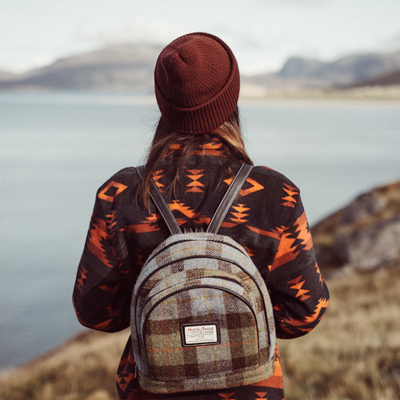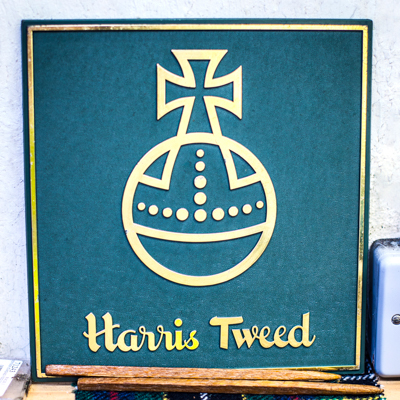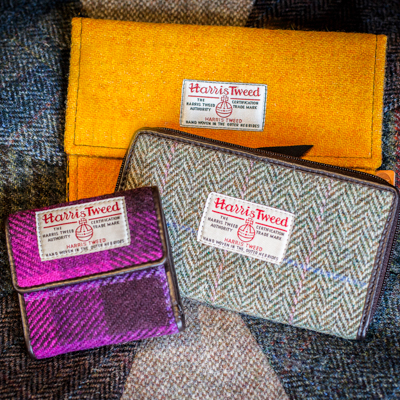The story of an island fabric, world-famous in fashion.
Harris Tweed is the Outer Hebrides' most famous export.
From the crofts of Lewis, Harris, Barra and Uist to the catwalks of the continent, Harris Tweed is an elegant and enduring gift to the globe.
It’s traditions are timeless and it’s uses, ubiquitous.
So let’s look at what goes into making this marvellous material, and why it’s so loved by so many.
From The Land Comes the Cloth
Harris Tweed must be dyed, spun, woven and finished in the Outer Hebrides. If it isn’t, then it’s not Harris Tweed.
It’s always been this way and always will be. Even the law says so.
“Harris Tweed means a tweed which has been - handwoven by the islanders at their homes in the Outer Hebrides, finished in the Outer Hebrides and made from pure virgin wool dyed and spun in the Outer Hebrides” Harris Tweed Act 1993 p3, s7
And the reason is simple.
The iconic colours, patterns and cuts of Harris Tweed represent the hues of the landscape, the beauty of the vistas and the values of the people who call here home.

Harris Tweed is this special place made manifest. A true fabric of society and vice versa.
Harris Tweed History
It’s unknown when Harris Tweed was first woven, but until the mid 19th century it was only available on the Outer Hebrides.
Then, in 1846, Lady Dunmore (widow of the Harris landowner) commissioned a tweed in her clan colours.
She approached the Paisley Sisters, a duo who’d honed their skills in Glasgow before returning to the islands to make the most refined cloth ever seen at the time.
Lady Dunmore was ecstatic with the results and immediately ordered more - marketing it to her wealthy friends on the mainland.
From there, Harris Tweed hit heady heights.
But success inspired imitations.
So, in 1909 the Harris Tweed Authority (HTA) introduced the celebrated Orb and Maltese Cross trademark to symbolise the real deal, and Harris Tweed’s popularity continued apace.

To cope, HTA expanded the trademark in 1934 to include mill-spinning (yarn was previously only hand-spun) and production skyrocketed, reaching a peak of 7.6 million yards in 1966.
In 1993, things changed permanently, by preserving the same.
The landmark Harris Tweed Act statutorily protected cherished traditions, forever tieing the cloth to the islands. A world first for any fabric.
Recent years have seen more recognition still, as the Outer Hebrides were awarded the prestigous accolade of being designated as a World Craft Region for Harris Tweed. The island’s were the first region in the UK to receive the honour and the fifth in Europe.
How Harris Tweed is made
The crafting of Harris Tweed takes the skill of many islander artisans.
Wool:
Pure virgin wool is thoroughly cleaned and dyed prior to spinning.
Yarn:
The wool is blended, carded, warped and spun into yarn at one of Lewis’s 3 mills.
Weaving: Weaving happens in weaver’s homes around the islands, as is tradition. Each Harris Tweed is hand-woven on looms, using unparalleled expertise.
Finishing: Tweed is washed, beaten, dried, steamed, cropped and pressed, before an inspector calls - only stamping the trademark onto Harris Tweed that makes the grade.
“Only when satisfied that the article is genuinely deserving of our historic orb will we brand the cloth with the certification mark” Lorna Macaulay, CEO Harris Tweed Association
How Harris Tweed is worn
In short, however you like!
Jackets, dresses, Kindle cases, slippers, hats, handbags… you name it, Harris Tweed adds style and prestige to anything.

The colours, twills, herringbones and plaids of Harris Tweed are all part of a rich island tapestry. An ongoing evolution of a fabric adored across the world.
All you have to do is wear yours with pride.
You can visit weavers, shops, places of interest on the Harris Tweed Trail which has been launched recently.




.png)






Comments
Comments are disabled for this post.